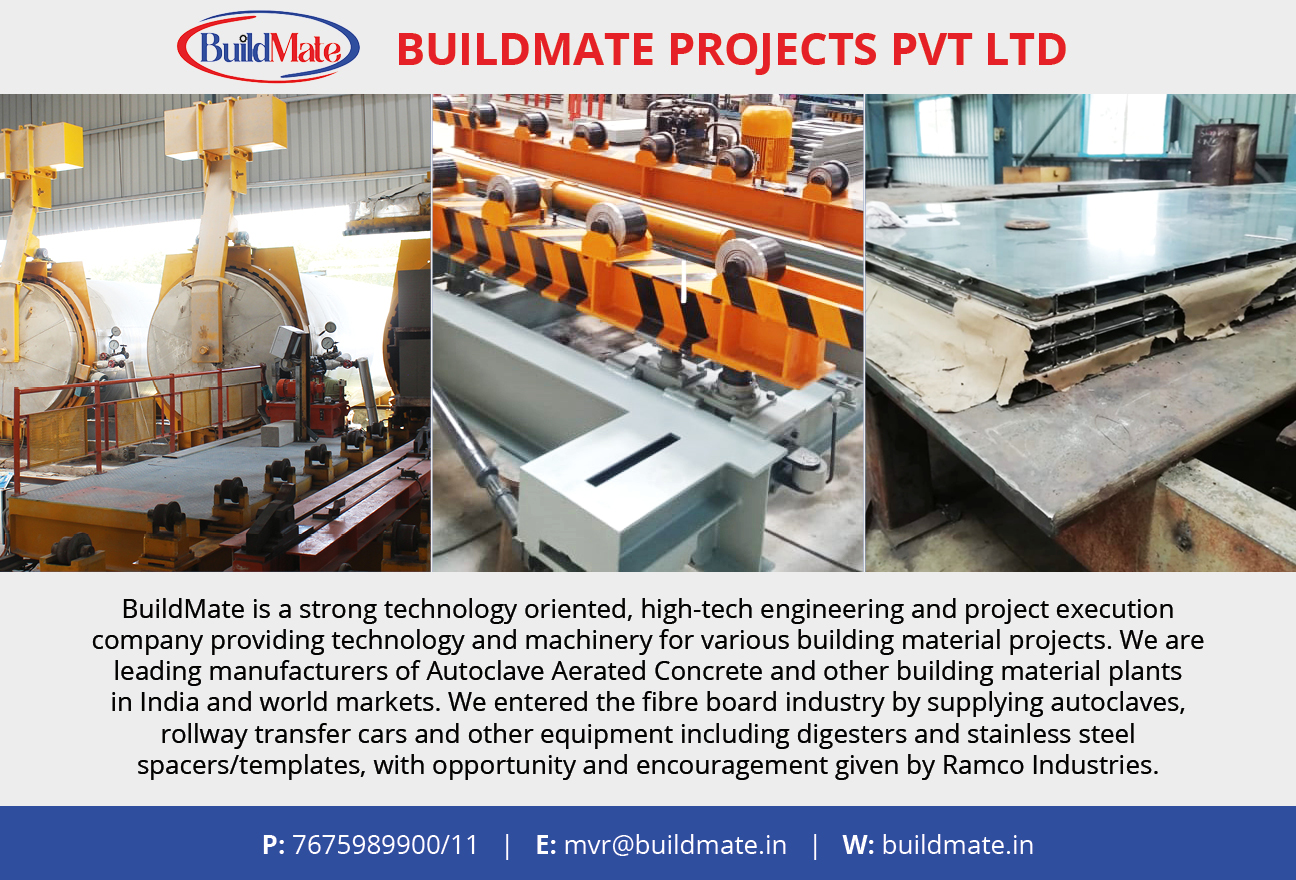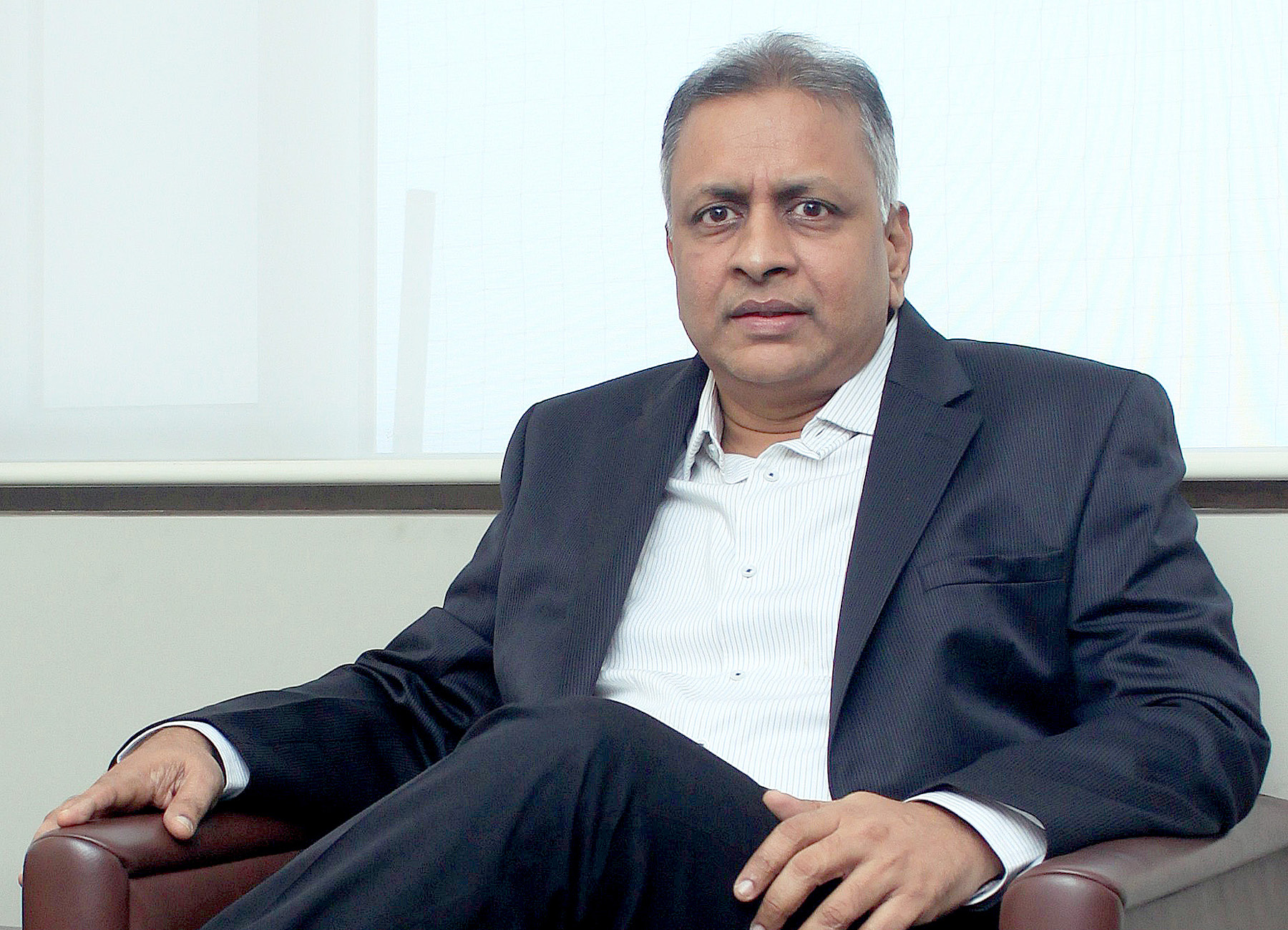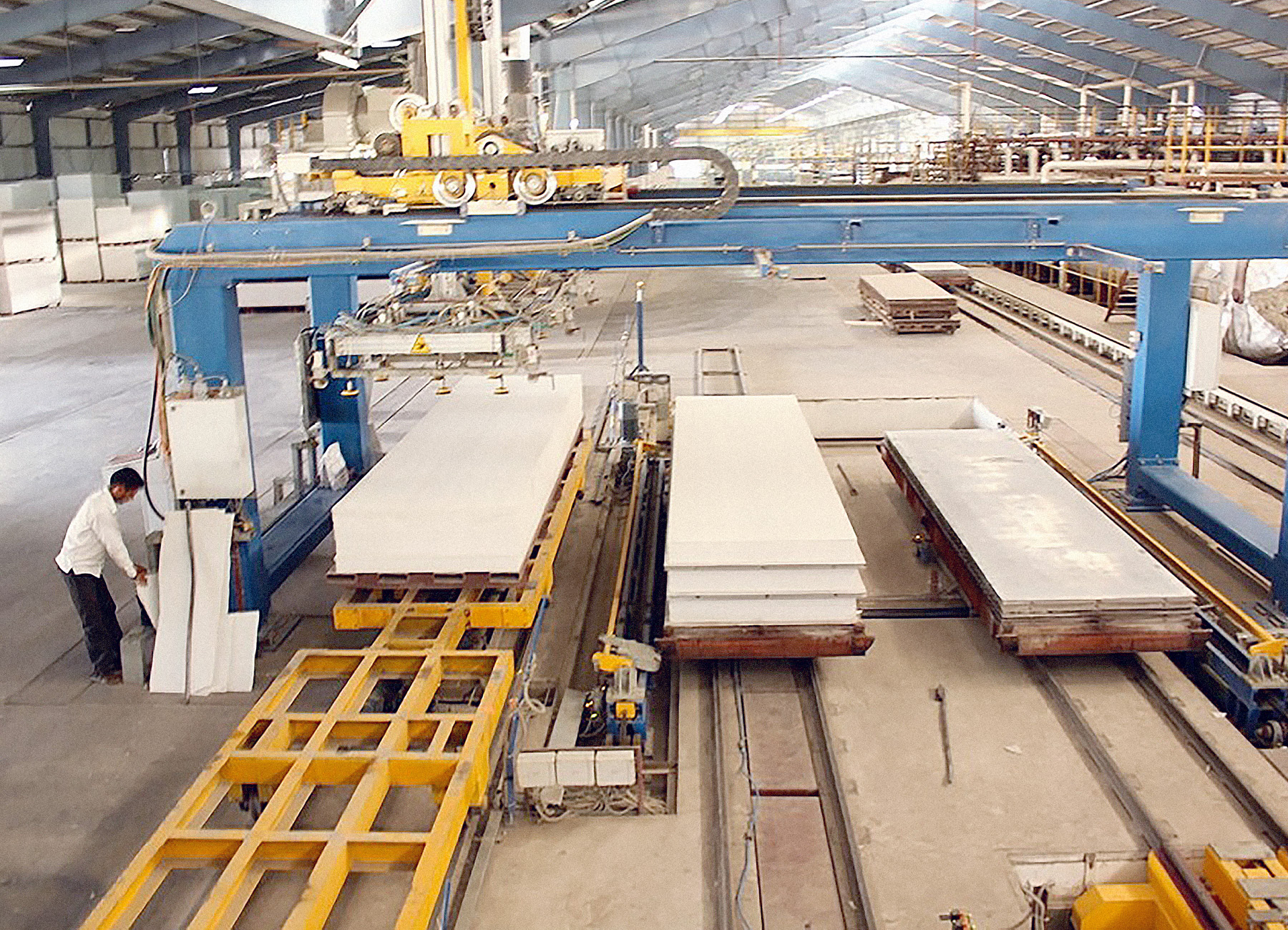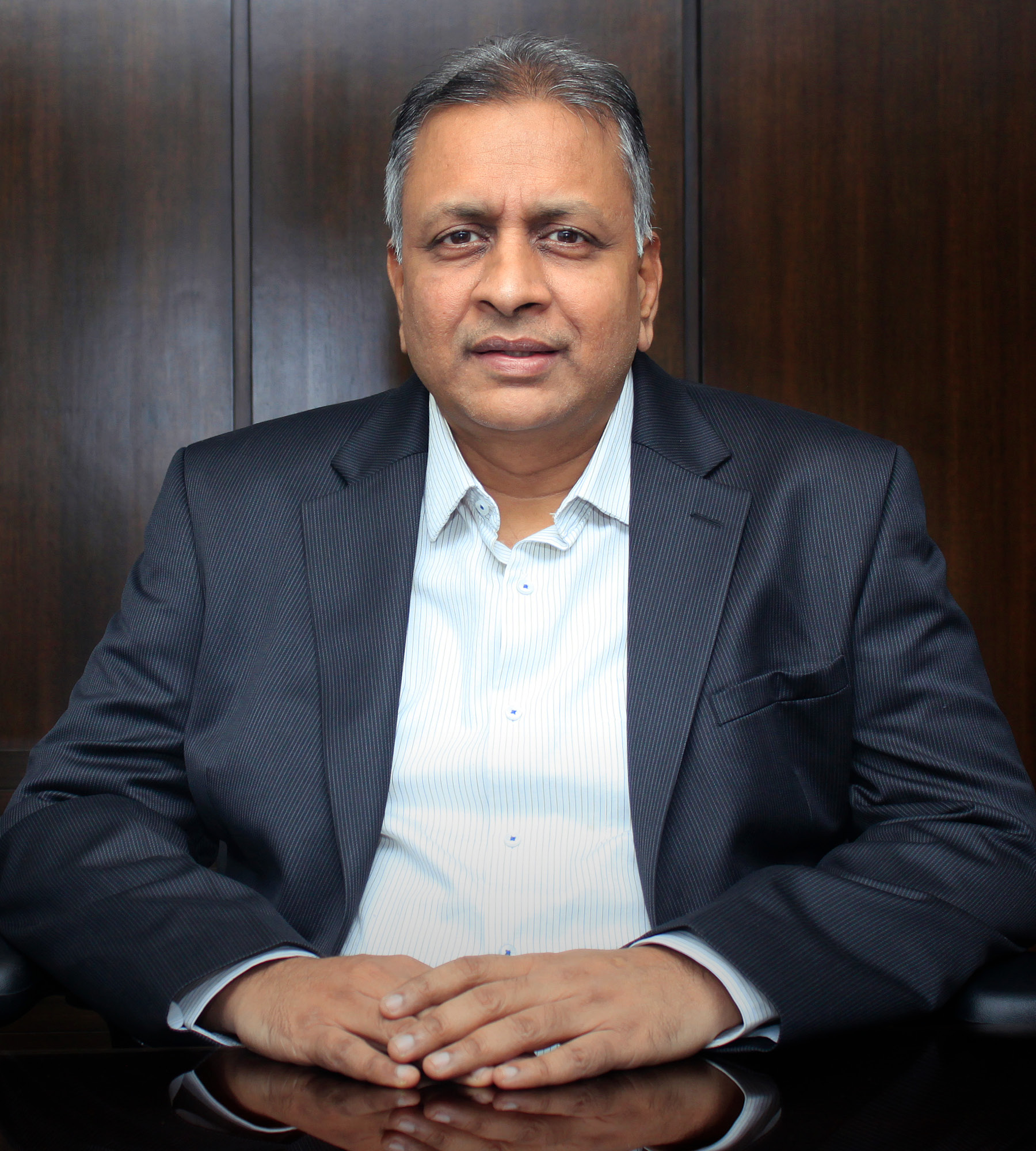Language
You can read the magazine in one of the following languages
Well before pivot became the business buzzword during the COVID-19 pandemic, Chennai’s Ramco Industries undertook a very deliberate – and important – change of business direction. “We were originally an asbestos roofing sheet company,” CEO Prem Shanker explains to The CEO Magazine.
For many decades, the company focused solely on the production of a material whose dangers were yet to be understood. As the hazards started to become known, a conscious decision was understandably made to ‘pivot’ into other areas.
“We diversified into textiles and then moved into new-age building products,” he says. “We also set up a services arm called SmartBuild to execute turnkey projects using our products.”
Today Ramco – a part of the US billion-dollar Ramco Group conglomerate – is known for something a world away from its original operations. “We are a one-stop shop for green dry construction, or environmentally friendly building materials that are made in the factory and assembled on-site,” he says.
It was, Prem says, a logical manoeuvre. “We had the experience in making corrugated sheets, which was, in a way, dry construction,” he explains. “The basic concept was there, even in a very rudimentary way.”
And the benefits of dry construction were plain to see: not only are buildings made using dry materials assembled quicker than regular wet constructions (when concrete is poured and set on site), but there’s a reduction of on-site wastage during the build process as well as reduced maintenance and replacement requirements during the building’s lifetime.

To fuel the shift, new plants were established in India, as well as one in Sri Lanka, from where a robust product portfolio of fibre cement boards, non-asbestos corrugated roofing and calcium silicate boards has emerged. This includes Ramco’s flagship product, the Ramco Hilux calcium silicate board, constructed using siliceous and calcareous materials reinforced with cellulose fibres.
The product has quickly earned a reputation for its ability to withstand water, termites and fungus as well being fire and sound resistance and a thermal insulator. Other building materials in its range include the Hicem range of fibre cement boards, tiles and planks. All products are developed by its in-house research and development (R&D) team.

“We now have a complete range of products to allow the assembly of a building faster and more accurately with a better finish and performance.”
These capabilities have been taken one step further with the recent launch of the ultra-high density Hiden range: the first boards in the Ramco product line that can be used as an external wall. “We now have a complete range of products to allow the assembly of a building faster and more accurately with a better finish and performance,” he enthuses.
For Prem and his team, all their hard work in repositioning the company is starting to pay off. “We are now one of the biggest companies in South Asia, with a million tonne-plus capacity in roofing and 150,000 tonne capacity in building products,” he says. Beyond India, its products are exported to over 30 countries across Africa, North America, Australia and Europe.
Prem has overseen many of the changes himself, having joined the company in 2008. For the veteran engineer with a Master’s degree in Mechanical Engineering from the University of Texas, the opportunity to move into the dry construction space fell at the right time in his career. “We just cannot afford to keep building the way we have been,” he says. “The entire world is moving towards greener and more energy and thermally efficient products.”
Having started out as a programmer with Tata Consultancy Services, he also says he saw enormous potential to enable the company to function on a seamless digital network. “Even though I no longer code, my background has given me enormous insight into emerging technologies and how we can use technology to improve the product and ease of manufacture for employees,” he says.

At Ramco, the challenge was to make operations as seamless and efficient as possible across its network of plants. After investing a significant amount of money and hours, a proprietary IT backbone and electronic workflow were created. And Prem is delighted with the results.
“I can confidently say that today, we are one of the few companies to have achieved an almost entirely paperless workspace,” he says. “And that goes for not only the regular commercial transactions but also the engineering, plant operations, dealer network and supplier network.
“The entire supply chain is now error-free and very fast. I think the employees love to work in this environment. On a personal level, it has also been a very satisfying effort.”

Now in the position to look back on the last two-and-a-half years, Prem can reflect on one learning in particular. “Not all major disruptions are a disadvantage,” he says. The COVID-19 lockdowns allowed Prem and his team a moment to stop and take stock of its current position. “We found the shutdown an opportunity to retool and refurbish our factories and expand capacity because we anticipated big growth.”
And his predictions were right. “We came back online to produce 50 per cent more,” he says.
The growth is showing no signs of slowing down and plans for two more plants are in the works, one in the west of India (which he hopes to start commissioning in the next 12 months) and another in the east. “We also have plans to see whether we can put another plant abroad,” he explains. “But there’s still so much uncertainty in global logistics and shipping, we’re waiting for the situation to stabilise before we make any moves.”
But while the products are all proven, and the company has decades of experience building new plants and innovating new technologies, the business is still facing particular challenges in growing. “At the end of the day, there’s still the market perception that bricks-and-mortar buildings are better,” he says. Yet as they continue to work hard, pushing the concept into the minds of builders, architects and end customers, the momentum is starting to turn their way.
“The entire world is moving towards greener and more energy and thermally efficient products.”
Looking forward, Prem says R&D continues to be a primary area of focus. “Over the past 10 years, we have set up a very strong R&D team,” he says. “And we have introduced products that are unique in the market.”
As the only producer of calcium silicate boards in South Asia, Ramco has enjoyed a distinct edge in the market. But Prem now has his eye on other opportunities and “even more sophisticated products”.
“We are moving towards substitute materials that deliver exactly the same performance in both new and existing products because cost pressures are so high today,” he says.
The strength of its in-house R&D is backed up by a robust digitally enabled process infrastructure that goes beyond number crunching. “Our IT backbone enables the frontline employee to achieve results with ease,” he says. “They don’t have to hunt for data, there are algorithms, which direct them to achieve particular functions and objectives.”
Yet, after two decades in the role, and orchestrating an enormous shift in business strategy, Prem knows that people are Ramco’s biggest asset of all. “If you have the right people in the right place and the right culture, then the business runs itself very efficiently.”


